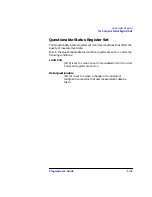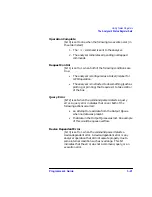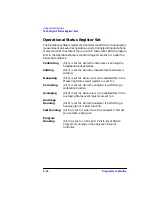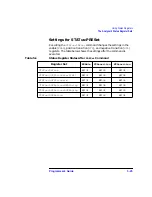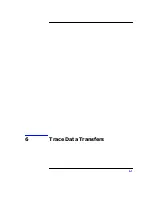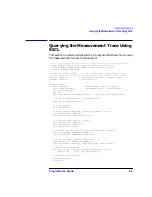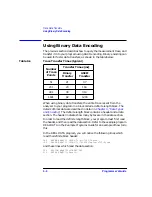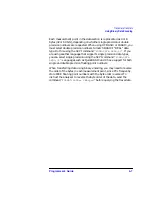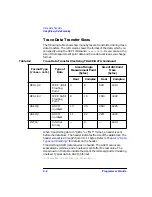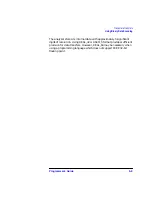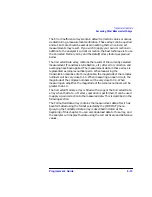
Programmer’s Guide
6-7
Trace Data Transfers
Using Binary Data Encoding
Each measurement point in the data section is represented as 4 or 8
bytes (32 or 64 bits), depending on whether single precision or double
precision numbers are requested. When using HP BASIC or IBASIC, you
must select double precision numbers to match BASIC's "REAL" data
type. Do this using the SCPI command
"FORM:DATA REAL,64"
. If you
are using another language that supports single precision data types,
you can select single precision using the SCPI command
"FORM:DATA
REAL,32"
. Languages such as QuickBASIC and C have support for both
single and double precision floating point numbers.
When transferring data using binary encoding, you may need to reverse
the order of the bytes in each measurement point, since PCs frequently
store IEEE floating point numbers with the byte order reversed. To
instruct the analyzer to reverse the byte order of the data, send the
command
"FORMAT:BORDer SWAPped"
before querying the trace data.
Summary of Contents for 8712ES
Page 11: ...1 1 1 Introduction to GPIB Programming ...
Page 27: ...2 1 2 Synchronizing the Analyzer and a Controller ...
Page 36: ...3 1 3 Passing Control ...
Page 39: ...4 1 4 Data Types and Encoding ...
Page 46: ...5 1 5 Using Status Registers ...
Page 71: ...6 1 6 Trace Data Transfers ...
Page 98: ...6 28 Programmer sGuide Trace Data Transfers Internal Measurement Arrays ...
Page 99: ...7 1 7 Using Graphics ...
Page 105: ...8 1 8 Front Panel Keycodes ...
Page 111: ...9 1 9 Introduction to SCPI ...
Page 129: ...10 1 10 Menu Map with SCPI Commands ...
Page 268: ...12 1 12 SCPI Conformance Information ...
Page 290: ...13 1 13 SCPI Error Messages ...

